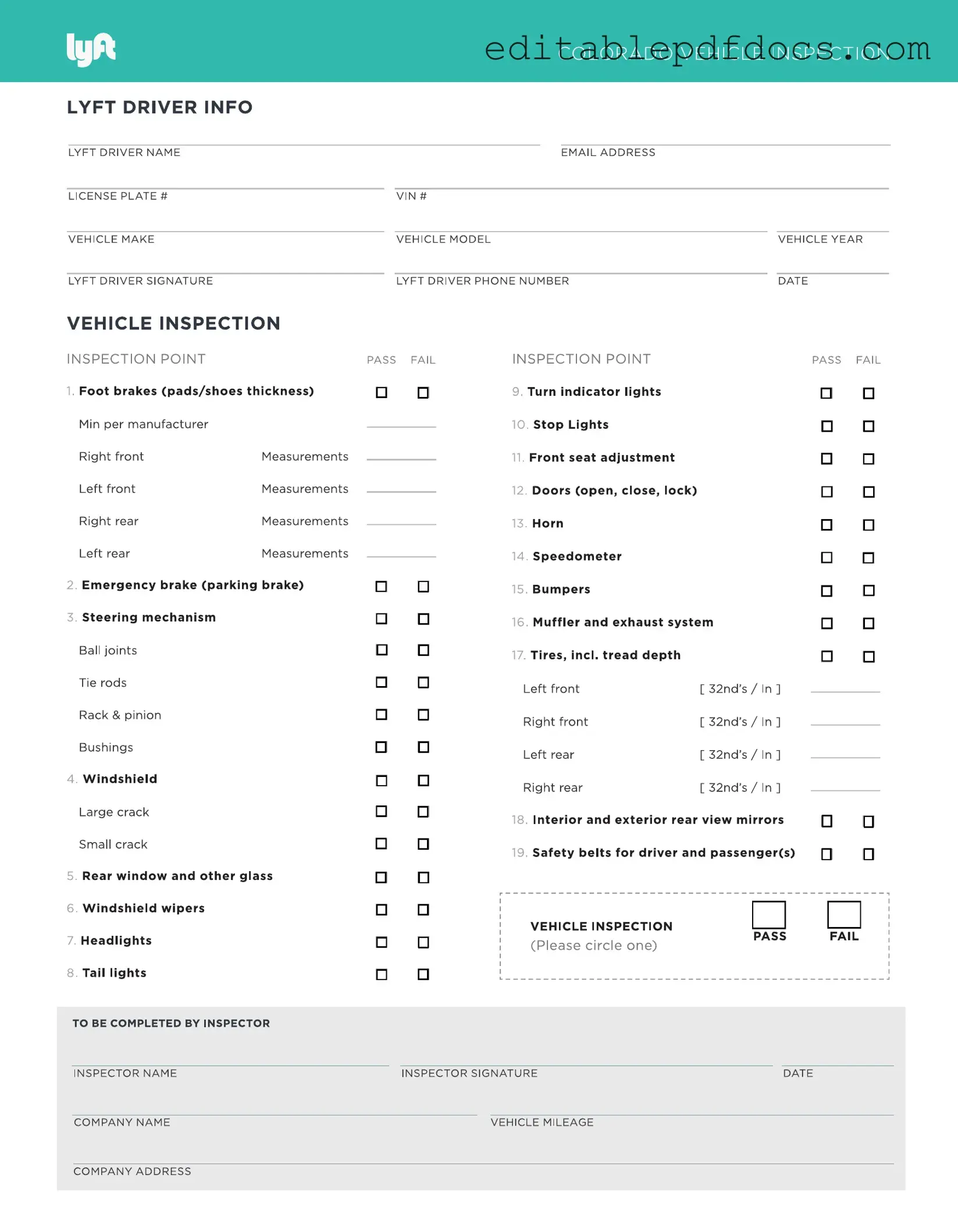The Lyft Inspection form plays a crucial role in ensuring that vehicles meet safety and operational standards before they can be used on the platform. This form is designed to assess various aspects of a vehicle, including its overall condition, safety features, and compliance with local regulations. Drivers must provide information about their vehicle's make, model, and year, alongside details regarding its mileage and any previous accidents. The inspection covers essential components such as brakes, tires, lights, and seat belts, all of which are vital for passenger safety. Additionally, the form requires documentation of any repairs or maintenance performed, emphasizing the importance of keeping vehicles in optimal working condition. By completing this inspection, drivers not only protect their passengers but also contribute to a safer ridesharing environment overall.
